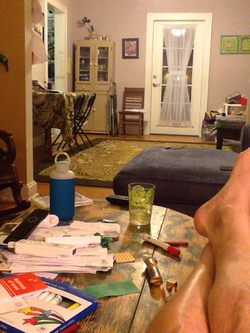
For those new to this site, John Lawson was the first European settler to explore the Carolinas and describe them in detail. The passenger pigeon extinction centenary reminds me exactly why we're undertaking this project of retracing his journey. Because Lawson, it turns out, left one of the best early descriptions of what those monstrous flocks of pigeons looked like in 1701, when Lawson wrote these words:
"In the mean time, we went to shoot Pigeons, which were so numerous in these Parts, that you might see many Millions in a Flock; they sometimes split off the Limbs of stout Oaks, and other Trees, upon which they roost o' Nights. You may find several Indian Towns, of not above 17 Houses, that have more than 100 Gallons of Pigeons Oil, or Fat; they using it with Pulse, or Bread, as we do Butter, and making the Ground as white as a Sheet with their Dung. The Indians take a Light, and go among them in the Night, and bring away some thousands, killing them with long Poles, as they roost in the Trees. At this time of the Year, the Flocks, as they pass by, in great measure, obstruct the Light of the day." [A New Voyage to Carolina]
Returning to the words of those first observers gives us opportunities to re-gather their data, to see again what they saw and compare it with what we see now. Recent years have seen scientists return to the observations of Thoreau, to document the effects of climate change; to the works of environmentalist Aldo Leopold to document what he would have heard (Stanley Temple has tried to recreate the sounds he would have heard in the morning); to the Grinnell-Storer transect of Yosemite to see how the animal populations had changed in the century since the original observations. Climatologists have for years been returning to ships' logs to gather data from centuries ago about wind, temperature, and current.
So it's a sad time to recall the extinction, through pure human madness, of a creature whose numbers once, in passage, would "obstruct the Light of the day." But it's a good time to be returning to the trenchant observations of Mr. Lawson, whose entertaining book will inspire us for months of journeying.
I expect to begin our first segment of the journey in mid-October in Charleston, by the way. Stay tuned.

 RSS Feed
RSS Feed